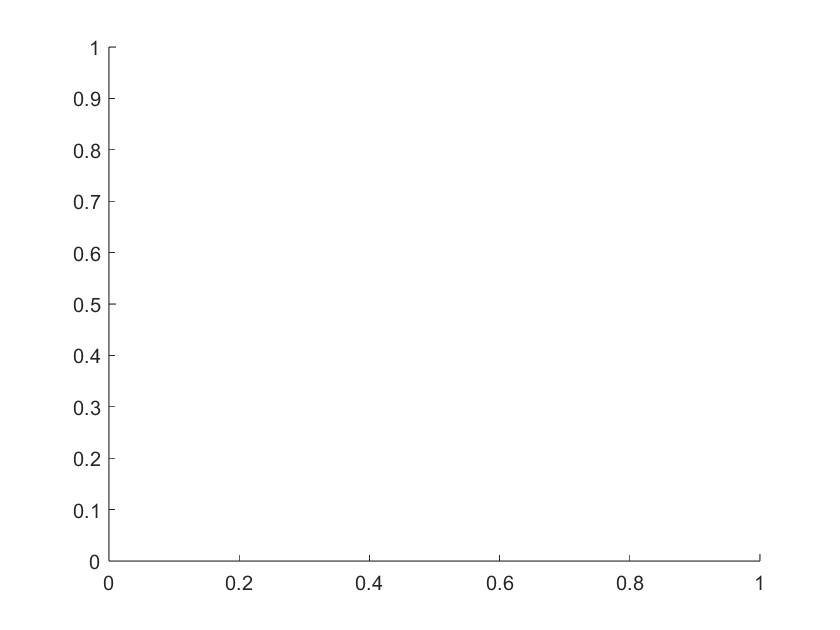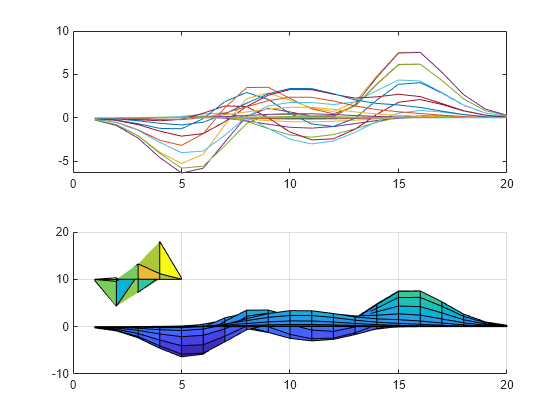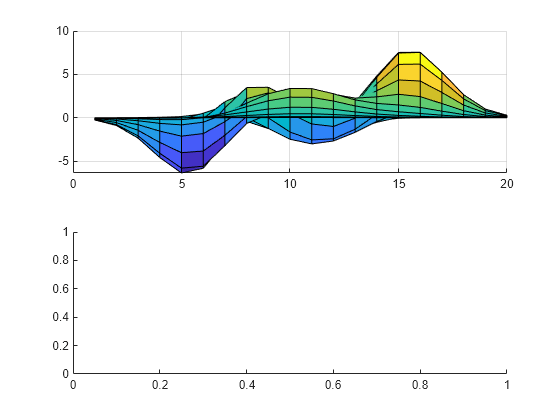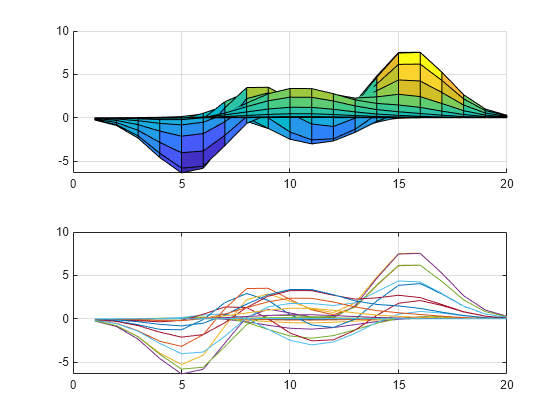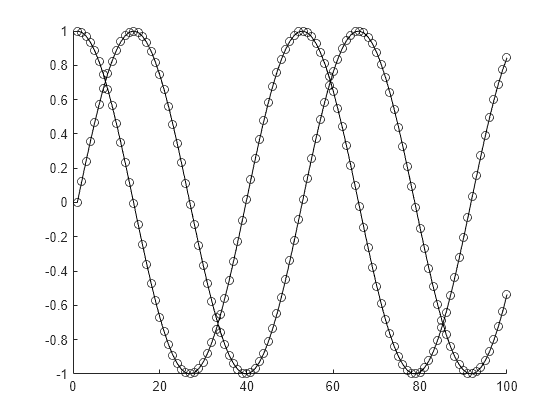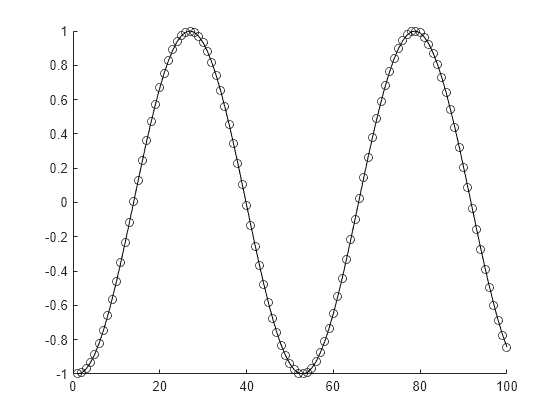newplot
Specify where to draw graphics objects
Description
newplot prepares the current axes for a new plot by ensuring
that the new plot either adds to or replaces the existing plot. The behavior of
newplot depends on the NextPlot property
of both the axes and its parent figure. For more information, see Algorithms.
If no axes exist, newplot creates a new Cartesian axes object
in the current figure.
For a simple 2-D plot, use the plot function instead.
newplot( updates the specified axes
ax)ax instead of the current axes. You can use this
newplot syntax at the beginning of your graphics code to
determine which axes and figure to target with subsequent plotting commands.
cax = newplot(___)Axes object. Specify the output argument with
either of the previous syntaxes. Use cax to query and modify
axes properties after creation. For a list of properties, see Axes Properties.
Examples
Input Arguments
Algorithms
The behavior of the newplot function depends on both the
NextPlot property of the figure and the
NextPlot property of the axes.
First, the newplot function queries the NextPlot property of the
figure. This table shows how the newplot function changes the
figure based on the value of NextPlot.
Value of | Behavior of |
|---|---|
|
|
|
|
|
This behavior is equivalent to using the |
|
This behavior is equivalent to using the |
Then, the newplot function queries the NextPlot property of the
axes in the figure. This table shows how the newplot function
changes the axes based on the value of its NextPlot property.
Value of | Behavior of |
|---|---|
|
This behavior is equivalent to calling the |
|
|
|
This behavior is equivalent to calling the |
|
For axes with only one y-axis, the
|
Version History
Introduced before R2006a
